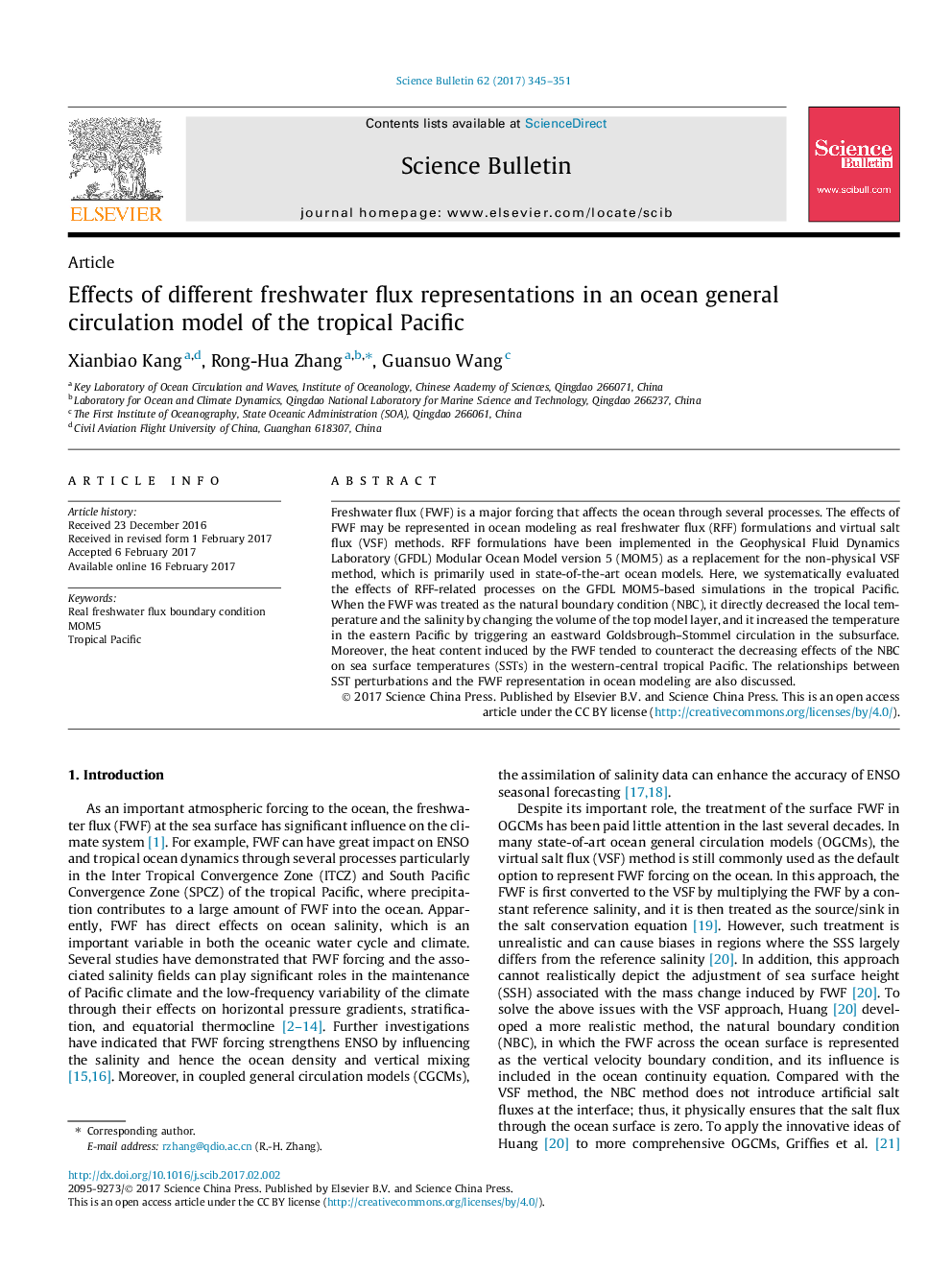| Article ID | Journal | Published Year | Pages | File Type |
|---|---|---|---|---|
| 5788878 | Science Bulletin | 2017 | 7 Pages |
Abstract
Freshwater flux (FWF) is a major forcing that affects the ocean through several processes. The effects of FWF may be represented in ocean modeling as real freshwater flux (RFF) formulations and virtual salt flux (VSF) methods. RFF formulations have been implemented in the Geophysical Fluid Dynamics Laboratory (GFDL) Modular Ocean Model version 5 (MOM5) as a replacement for the non-physical VSF method, which is primarily used in state-of-the-art ocean models. Here, we systematically evaluated the effects of RFF-related processes on the GFDL MOM5-based simulations in the tropical Pacific. When the FWF was treated as the natural boundary condition (NBC), it directly decreased the local temperature and the salinity by changing the volume of the top model layer, and it increased the temperature in the eastern Pacific by triggering an eastward Goldsbrough-Stommel circulation in the subsurface. Moreover, the heat content induced by the FWF tended to counteract the decreasing effects of the NBC on sea surface temperatures (SSTs) in the western-central tropical Pacific. The relationships between SST perturbations and the FWF representation in ocean modeling are also discussed.
Keywords
Related Topics
Physical Sciences and Engineering
Chemistry
Chemistry (General)
Authors
Xianbiao Kang, Rong-Hua Zhang, Guansuo Wang,
